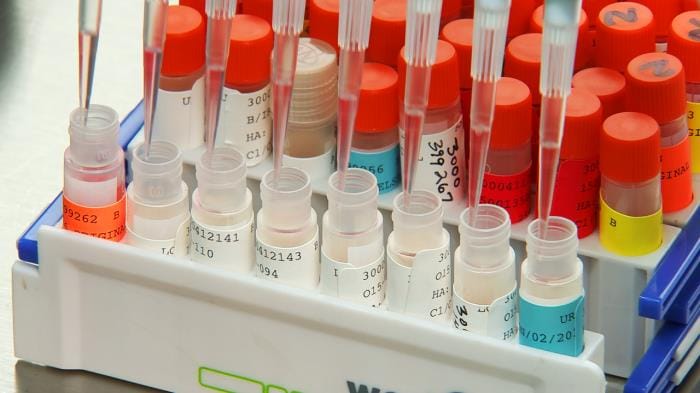Key points
- Cell-based vaccines are a type of vaccine that are grown in mammalian cells instead of chicken eggs.
- Flucelvax Trivalent is the only cell-based influenza (flu) vaccine in use in the United States.

Cell-based flu vaccine
'Cell-based' refers to how the influenza (flu) vaccine is made. Most inactivated flu vaccines are produced by growing flu viruses in eggs. The flu viruses used in the cell-based vaccines are grown in cultured cells of mammalian origin instead of in hen's eggs.
Flucelvax is the only influenza vaccine in use in the United States for which the vaccine viruses are grown in a mammalian cell culture. Currently, the recombinant flu vaccine and the cell culture-based flu vaccine are the only egg-free flu vaccines licensed for use in the United States.
How cell-based flu vaccines are made
People who should not get Flucelvax
People who are not within the FDA-approved age range (those younger than 6 months), those who have had severe allergic reactions to any ingredient of the vaccine, or who have had an allergic reaction to a cell-culture based flu vaccine should not get Flucelvax.
Advantages of cell-based flu vaccine manufacturing
Cell-based flu vaccine production does not use flu viruses grown in eggs and, therefore, is not dependent on the supply of eggs. In addition, use of cell-based candidate vaccine viruses (CVVs) in vaccine production has the potential to offer better protection compared to traditional, egg-based flu vaccines. The viruses used to make cell-based vaccines might be more similar to circulating "wild" flu viruses than the viruses grown in eggs and used to make egg-based vaccines. In one study published in the Journal of Infectious Diseases among Medicare beneficiaries 65 years and older during the 2017–2018 influenza season, cell-based vaccine provided greater protection against flu-related hospitalizations than standard-dose, egg-based vaccine. However, this difference was not seen in similar studies conducted during the 2018–2019 and 2019–2020 flu seasons.
Since the 2019–2020 flu season, all flu CVVs used in the Flucelvax are cell-based, making the vaccine egg-free.
Cell-based vaccine manufacturing
The cell-based vaccine manufacturing process uses mammalian cells (Madin-Darby Canine Kidney, or MDCK cells) to grow flu viruses instead of fertilized hen's eggs. Since the 2019–2020 flu season, all of the CVVs provided to the cell-based vaccine manufacturer are cell-derived rather than egg-derived.
Significance of FDA approving cell-based candidate vaccine viruses
Growing flu viruses in eggs can introduce changes (called egg-adapted changes) that can cause differences between the viruses in the vaccine and the ones that are circulating (‘wild’). These changes may have important implications for the body’s immune response to vaccination. For example, egg-adapted changes could result in production of less effective antibodies by the human immune system, and this can make vaccines less effective at preventing disease caused by the specific flu viruses in circulation. FDA’s approval of cell-based CVVs for use in cell-based flu vaccines could possibly improve the effectiveness of cell-based flu vaccines.
Benefits of using cell-based flu vaccines
Some observational studies have shown greater protection against flu or flu-like illness among people who received cell-based inactivated influenza vaccines compared with those who received standard-dose egg-based inactivated vaccines.
A potential additional advantage of cell-based technology is that it might permit faster start-up of the vaccine manufacturing process in the event of a pandemic. The cells used to manufacture Flucelvax are kept frozen and "banked." Cell banking ensures an adequate supply of cells is readily available for vaccine production. Growing CVVs in cell culture for the manufacture of Flucelvax is not dependent on an egg supply. Cell-based vaccines might be easier to scale up if egg supply is limited.
What were the results of the clinical trials using cell-based technology?
A clinical trial of the trivalent formulation of Flucelvax demonstrated effectiveness and safety among persons 18 through 49 years old Findings from studies of the trivalent and quadrivalent formulations of Flucelvax in adults aged 50 years and older and in children aged 6 months through 17 years also support the effectiveness and the safety of Flucelvax when used in these populations.
- Why has a cell-based flu vaccine been developed?
- How is the cell-based vaccine manufacturing process different than the traditional egg-based manufacturing process?
- What are the possible benefits of using cell-based flu vaccines?
- What were the results of the clinical trials using cell-based technology?
- Has cell-based technology been used before?
